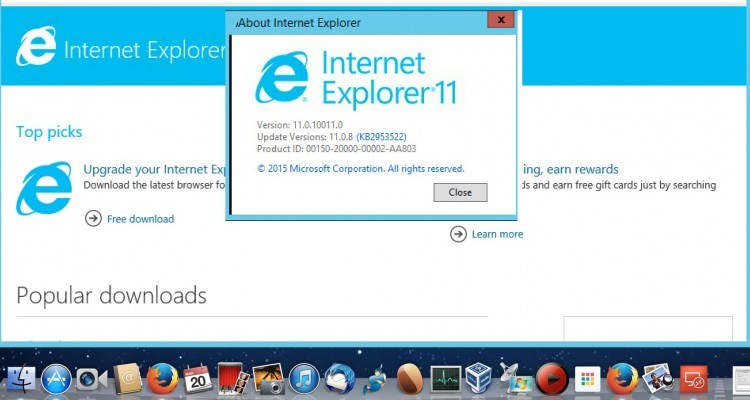Internet Explorer For Mac Os Sierra
Welcome to the fold. You're anxious to use your Mac, but you've amassed years of data on that PC. Switching platforms doesn't mean starting over: You can still use those old files. Apple makes it easy with a free utility called Migration Assistant. Here's how it works.
Outlook; 2003 / 2007 / 2010 /. / 2016 This option controls which address book you see when you open the Address Book (via clicking Ctrl+Shift+B) and when you click the To, Cc, or Bcc buttons when composing e-mails. To change the default Address Book, do the following: 1. On the Home tab. To change Outlook's default address book, do the following: On the Home ribbon, click Address Book in the Find group. In Outlook 2007, click the Address Book icon on the Standard toolbar. Each email account will be associated with a specific data file. This will also change the 'default calendar folder' for the profile. To change the default data file, from OL menu, go to File --> Account Settings --> Data Files tab --> highlight which data file you want to set as the default and click on 'Set as default' button. Outlook 2016 for mac change default address book. An example of the Address Book list. Change the default address book. The contacts in your Contacts folder make up the contents of the Outlook Address Book. If you create other Contacts folders, each of these folders is also listed in the Address Book list, available for you to choose from. To ensure this, you might want to change your default address book. On the Home tab, in the Find group, click Address Book. In the Address Book dialog box that opens, click Tools > Options.
Migration Assistant is a utility Apple includes in the Utilities folder of every Mac. You'll see it when you first start up your Mac, when your Mac asks you if you want to transfer data over from another Mac, a Time Machine backup, or a PC. Apple makes the app freely available for download for transferring to and Migration Assistant will help you transfer files from a PC running Windows XP, Windows Vista, Windows 7, Windows 8, or Windows 10 operating systems. The Mac and the PC both have to be running Migration Assistant. Pages for mac. Both should be on the same network, in order to find each other.
The data migration may take several hours depending on what's being transferred and what means are used: Wi-Fi is slower, a wired Ethernet connection is faster. But one way or the other, your patience will be rewarded. What actual data gets transferred will depend on which version of Windows you're using, and what programs created your data. Bookmarks from Internet Explorer and Firefox will be brought into Safari, for example.
ITunes content and image files should make it over as well. System settings will get pulled over. You'll be able to specify what other files you'd like to bring over, too. Email, contacts, and calendar information are where it gets a bit tricky.
The bottom line is that Migration Assistant will pull over your email account information, and if you're using Microsoft Outlook, it should pull over your email messages, your contacts, and your calendars. Other programs may vary. Apple has of what gets migrated over to help you understand. How to migrate your data from your PC to your Mac First, connect your Mac to your PC either through Ethernet, or by making sure both computers are on the same local Wi-Fi network.
Devices and Mac OS X version. VLC media player requires Mac OS X 10.7.5 or later. It runs on any 64bit Intel-based Mac. Previous devices are supported by older releases. The last official Internet Explorer for Mac is no longer functional since the release of OS X 10.7 (Lion) and discontinued since 2005. You also need a virtualization software to run Internet Explorer in Mac. For example, you could install various versions of Internet Explorer if you needed to test websites with them on your Mac. The Windows version of Steam is available, and which could allow you to run some Windows-only games on your Mac. As we all know, the Internet Explorer is a software owned by Microsoft and comes by default on all PC running on Windows OS. Being a Mac user whose PC runs on OS X, you do not have access to Microsoft software for your Mac PC.

On your new Mac: • Launch a Finder window. • Click on Applications in the sidebar. • Double-click or control-click on the Utilities folder. • Click on Migration Assistant. • Click Continue. • Click From a PC.
When prompted to select how you want to transfer your information. • Click Continue.
On your PC: • Make sure you've downloaded and installed. • Launch Migration Assistant on your PC.
• Launching Migration Assistant on the PC is a one-way trip: It's only designed to transfer data from your PC to a new Mac. After launching it, Migration Assistant for Windows will try to connect to its Mac counterpart. A security code will display on the screen. • Confirm that the code on your PC is the same on your Mac. • Select the files, folders, and settings you want to transfer from your PC to your Mac.
• Click continue. Obviously, there are other ways to move files between Macs and PCs. Thumb drives will work on both machines, so you can manually transfer whatever files you want to use, for example. But Migration Assistant provides an elegant, convenient and absolutely free way of managing the transition to becoming a Mac user, as long as you have the time to use it. Have any questions?